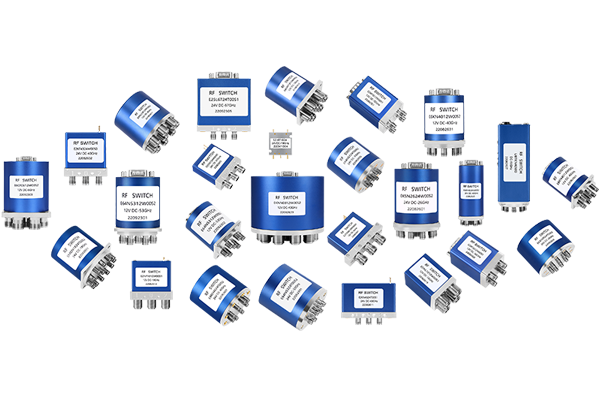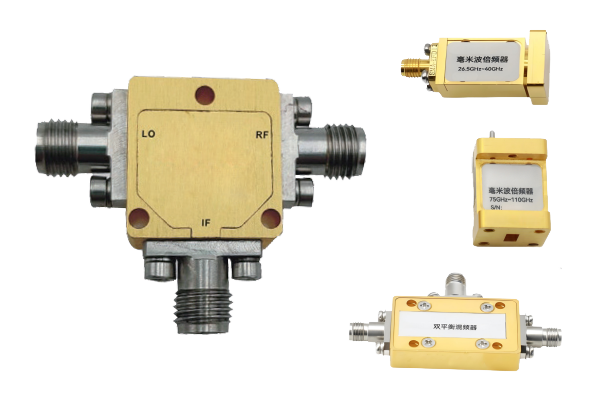
Pin diode components are considered indispensable in advanced RF applications because of their core operational properties Their prompt switching characteristics combined with low capacitance and small insertion loss enable efficient use in switching modulation and attenuation scenarios. The main mechanism of PIN diode switching uses bias voltages to regulate copyright flow through the device. The control voltage varies the depletion region dimensions at the junction and thereby alters conductive behavior. Setting different bias levels allows PIN diodes to perform high-frequency switching with minimal distortion
PIN diodes find placement inside complex circuit frameworks when precise timing and control is required They can serve in RF filter networks to selectively transmit or block specific frequency ranges. Also their capacity to manage high power signals makes them applicable to amplifiers power dividers and signal generators. Reduced size and improved efficiency of PIN diodes have enhanced their applicability in wireless and radar engineering
Designing Coaxial Switches for Optimal Performance
The design of coaxial switches is intricate and needs detailed assessment of numerous variables Key factors such as switch category operating band and insertion loss shape the coaxial switch performance. Designs should focus on cutting insertion loss and increasing isolation to improve switch performance
Evaluation focuses on quantifying return loss insertion loss and interport isolation as major metrics. Such parameters are usually determined via simulations analytic models and physical experiments. Detailed and accurate analysis underpins reliable functioning of coaxial switches in various systems
- Simulation packages analytic approaches and lab experiments are commonly applied to analyze coaxial switch designs
- Thermal effects impedance mismatches and production tolerances are major influences on coaxial switch behavior
- Contemporary advances and emerging developments in coaxial switch engineering seek improved metrics with smaller size and reduced power
Optimizing Low Noise Amplifier Architectures
Refining the LNA for better performance efficiency and gain underpins superior signal fidelity in systems It necessitates thoughtful transistor selection bias configuration and circuit topology planning. Sound LNA architectures control noise contributions and support strong low-distortion amplification. Analytical modeling and simulation utilities are key to predicting how different design options influence noise behavior. Securing a low Noise Figure indicates superior capability to amplify while adding little noise
- Prioritizing low-noise transistors is crucial for optimal LNA performance
- Optimal proper and suitable bias conditions are necessary to limit noise generation in transistors
- Circuit topology choices are decisive for the resulting noise performance
Tactics like impedance matching noise mitigation and feedback regulation advance LNA performance
Radio Frequency Path Routing with Pin Diodes

Pin diode switches provide a versatile and efficient approach for routing RF signals across applications The semiconducting switches operate at high speed to provide dynamic control over signal paths. Their minimal insertion loss and robust isolation characteristics prevent significant signal degradation. They find use in antenna selection systems duplexers and phased array antennas
The switching behavior is governed by voltage driven modulation of the diode’s resistance. In the off deactivated or open state the diode presents a high resistance path blocking signal flow. Introducing a positive control voltage reduces resistance and opens the RF path
- Moreover furthermore additionally PIN diode switches provide quick switching low energy use and small form factors
Various PIN diode network configurations and architectural designs can achieve advanced signal routing functions. Strategic interconnection of many switches yields configurable switching matrices for versatile path routing
Coaxial Microwave Switch Assessment and Efficacy

Testing and assessment of coaxial microwave switches are crucial to ensure efficient operation within systems. Diverse factors including insertion reflection transmission loss isolation switching speed and frequency span impact performance. Complete assessment involves quantifying parameters over diverse operational and environmental test conditions
- Moreover the evaluation must factor in reliability robustness durability and environmental stress tolerance
- The end result of a solid evaluation produces essential valuable and critical data to support selection design and improvement of switches for defined applications
Comprehensive Survey on Minimizing LNA Noise
Low noise amplifier circuits are essential components in many wireless radio frequency and RF communication systems because they amplify weak signals while limiting added noise. This review gives a broad examination analysis and overview of methods to lower noise in LNAs. We investigate explore and discuss critical noise mechanisms like thermal shot and flicker noise. We further analyze noise matching feedback topologies and bias optimization strategies to suppress noise. It highlights recent progress including advanced semiconductor materials and novel circuit topologies that cut noise figure. Providing comprehensive insight into noise management principles and approaches the article benefits researchers and engineers in RF system development
High Speed Switching Roles of PIN Diodes

PIN diodes display exceptional unique and remarkable characteristics making them suitable for high speed switching Low parasitic capacitance and small resistance enable quick switching to handle precise timing requirements. Their proportional voltage response enables controlled amplitude modulation and reliable switching behavior. This versatility flexibility and adaptability makes them suitable applicable and appropriate for a wide range of high speed applications They are applied in optical communications microwave systems and signal processing equipment and devices
Integrated Circuit Solutions for Coaxial Switching
Integrated circuit coaxial switch technology marks a significant advancement in signal routing processing and handling within electronic systems circuits and devices. These specialized integrated circuits enable control management and routing of coaxial signals with high frequency performance and low latency insertion times. IC miniaturization enables compact efficient reliable and robust designs ideal for dense interfacing integration and connectivity needs
- By meticulously carefully and rigorously applying these methods developers can produce LNAs with superior noise performance enabling sensitive reliable electronics With careful meticulous and rigorous deployment of these approaches developers can accomplish LNAs with outstanding noise performance enabling trustworthy sensitive electronics By meticulously carefully and rigorously adopting these practices designers can deliver LNAs with excellent noise performance supporting reliable sensitive systems Through careful meticulous and rigorous application of coaxial switch such methods engineers can design LNAs with top tier noise performance enabling dependable sensitive systems
- Applications range across telecommunications data communications and wireless networking
- Aerospace defense and industrial automation benefit from integrated coaxial switch solutions
- Consumer electronics audio video equipment and test and measurement systems also use IC coaxial switch technology
Designing LNAs for Millimeter Wave Frequencies

Designing for mmWave requires accounting for high attenuation and pronounced noise effects. Parasitic capacitance and inductance play a dominant role at mmWave and necessitate precise layout and component choices. Minimizing input mismatch and maximizing power gain are critical essential and important for LNA operation in mmWave systems. Selecting active devices like HEMTs GaAs MESFETs and InP HBTs greatly affects achievable noise figures at these frequencies. Moreover the implementation and tuning of matching networks is critical to achieving efficient power transfer and correct impedance matching. Attention to package parasitics is crucial as they have potential to harm mmWave LNA performance. Applying low loss transmission lines and meticulous ground plane design is essential necessary and important to lower signal reflection and keep bandwidth
PIN Diode RF Characterization and Modeling Techniques
PIN diodes are vital components elements and parts used throughout numerous RF switching applications. Accurate precise and detailed characterization is critical for designing developing and optimizing reliable high performance circuits using PIN diodes. Included are analyses evaluations and examinations of electrical voltage and current characteristics such as resistance impedance and conductance. Their frequency response bandwidth tuning capabilities and switching speed latency or response time are likewise measured
Moreover additionally the crafting of accurate models simulations and representations for PIN diodes is essential crucial and vital for predicting RF behavior. Various modeling approaches such as lumped element distributed element and SPICE models are used. The selection of an apt model simulation or representation relies on particular application requirements and the expected required desired accuracy
State of the Art Techniques for Low Noise Amplifier Design
Developing LNAs involves diligent consideration of circuit topology and components to obtain optimal noise performance. Recent advances in semiconductor tech have unlocked innovative groundbreaking sophisticated LNA design techniques that diminish noise greatly.
Among several numerous numerous these techniques are employing utilizing implementing wideband matching networks incorporating low noise transistors with high intrinsic gain and optimizing biasing scheme strategy approach. Additionally advanced packaging and thermal management practices are critical for minimizing external noise influences. By meticulously carefully and rigorously applying these methods developers can produce LNAs with superior noise performance enabling sensitive reliable electronics
